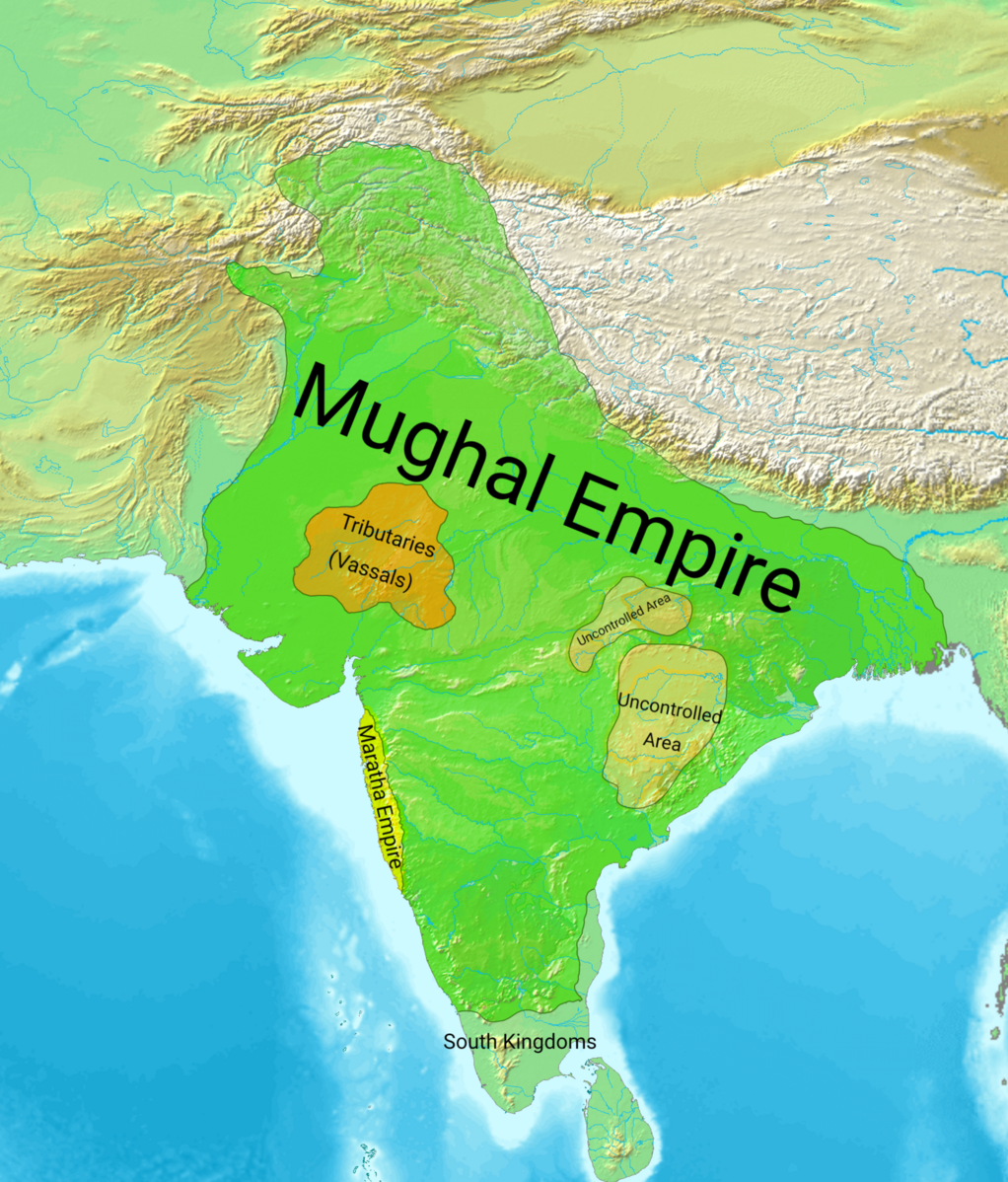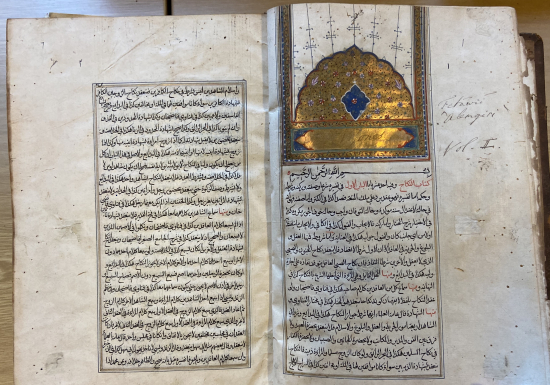OCR Specification focus:
‘The triumph of Aurangzeb the triumph of Aurangzeb’
Aurangzeb’s accession marked a decisive turning point in Mughal history, defined by military brilliance, political shrewdness, and relentless ambition that consolidated imperial power across much of India.
Aurangzeb’s Rise to Power
Aurangzeb, the third son of Shah Jahan, emerged as ruler after a brutal succession struggle (1657–1658) against his brothers, particularly Dara Shikoh. His political ruthlessness was coupled with tactical genius: he defeated Dara at the Battle of Samugarh (1658) and imprisoned his father. This violent pathway to the throne demonstrated his uncompromising character and established his authority through decisive military victories and political elimination of rivals.
Personality and Leadership
Aurangzeb was renowned for his austere lifestyle, personal piety, and strict adherence to orthodox Sunni Islam. Unlike his predecessors, who had embraced Persian culture and artistic splendour, he cultivated an image of humility and frugality. However, his apparent simplicity concealed deep ambition and relentless focus on expanding and consolidating the empire.
Orthodox Sunni Islam: A strict interpretation of Islamic law (sharia), emphasising adherence to Quranic injunctions, traditional jurisprudence, and ritual practices.
His austere image distinguished him from Shah Jahan’s cultural grandeur, aligning him instead with a moral vision of empire based on discipline and duty.
Military Triumphs and Expansion
Aurangzeb’s reign was marked by sustained military campaigns which extended Mughal control to its largest geographical extent. His victories underscored his triumph over both internal and external rivals.

Map of the Mughal Empire at or near its greatest extent under Aurangzeb (r. 1658–1707), including the Deccan. Place names highlight Bijapur and Golconda. Source
Key Military Achievements
Defeat of rival princes in succession wars, establishing uncontested authority.
Annexation of Bijapur (1686) and Golconda (1687), eliminating two powerful Deccan sultanates.
Long campaigns against the Marathas, led by the charismatic Shivaji and his successors. Though costly, they revealed Aurangzeb’s determination to suppress regional resistance.
Frequent northern campaigns secured the empire’s frontiers against Afghan and Central Asian incursions.
The Deccan Conquests
The conquest of the Deccan represented both triumph and overreach. Aurangzeb’s successful destruction of Bijapur and Golconda demonstrated tactical brilliance and logistical endurance. However, maintaining prolonged campaigns in the south drained imperial resources and exposed the limitations of Mughal military systems, foreshadowing later difficulties.
The Triumph of Authority
Aurangzeb’s rule was defined not only by conquest but also by the projection of imperial power and authority.
Assertion of Central Power
He strengthened administrative centralisation, demanding loyalty from nobles and regional elites.
By incorporating conquered Deccan territories into the imperial structure, he affirmed the Mughal capacity to subsume independent sultanates.
His victory in succession disputes illustrated the triumph of Mughal dynastic continuity under his leadership.
Religious Triumphs
Aurangzeb sought to define his reign through an explicitly Islamic identity. He reimposed the jizya tax on non-Muslims in 1679, signalling a reversal of Akbar’s more inclusive policies. He also promoted Islamic learning, patronised mosques, and censured practices he regarded as un-Islamic.
Jizya: A tax historically levied on non-Muslims in Islamic states, symbolising their protected but subordinate status within a Muslim-ruled society.
While these measures enhanced his image as a defender of Islam, they also alienated sections of the population, particularly Hindus and Sikhs, creating tensions within the empire.
Court, Culture, and Governance
Although Aurangzeb discouraged extravagant patronage, his reign still witnessed cultural and administrative developments that reinforced imperial triumph.
Administrative Practices
Revenue reforms ensured tighter control over imperial finances.
Expansion of the mansabdari system integrated new regions into Mughal administration.
Aurangzeb’s personal involvement in decision-making created a highly centralised, if sometimes overburdened, government.
Cultural Impact
Despite his rejection of lavish patronage, Aurangzeb sponsored certain architectural projects, such as the Bibi ka Maqbara in Aurangabad, often called the "Taj of the Deccan." His reign also fostered the compilation of the Fatawa-e-Alamgiri, a vast digest of Islamic law, underscoring his religious triumph in codifying sharia for governance.

Frontal view of Bibi Ka Maqbara at Aurangabad, illustrating Mughal funerary design — dome, four minarets, and charbagh layout. Garden channels in the foreground.

Opening of a volume of al-Fatawa al-‘Alamgiriyyah, associated with Aurangzeb’s commission. The folio shows formal Arabic calligraphy; ownership marks appear.
Triumph Over Opposition
Aurangzeb’s triumph lay in his ability to suppress or neutralise opposition throughout his reign.
Against the Rajputs
Initially conciliatory towards the Rajputs, he later clashed with leaders such as Rana Raj Singh of Mewar and the rulers of Marwar. By enforcing direct Mughal authority in their lands, he sought to break their semi-autonomous power.
Against the Sikhs
The execution of the Sikh Guru Tegh Bahadur (1675) demonstrated Aurangzeb’s determination to subdue Sikh defiance, though it also strengthened Sikh resistance in the long term.
Against the Marathas
The Marathas represented his most formidable adversaries. Though Aurangzeb successfully captured fortresses and imposed temporary control, the sheer resilience of Maratha guerrilla tactics made complete subjugation elusive. Nonetheless, his persistent campaigns reflected his triumph of will and determination to dominate even the most defiant opponents.
The Nature of Aurangzeb’s Triumph
Aurangzeb’s triumph can be understood in several dimensions:
Dynastic Triumph: Securing the throne against fierce succession struggles.
Territorial Triumph: Expanding Mughal control to its greatest extent.
Religious Triumph: Positioning himself as the orthodox defender of Islam.
Administrative Triumph: Strengthening central control over an enlarged empire.
Together, these achievements embodied the triumph of Aurangzeb, as envisioned in the OCR specification, marking him as both a conqueror and an uncompromising ruler whose reign defined the zenith of Mughal authority.
FAQ
Aurangzeb’s strict religious policies alienated non-Muslim communities, particularly Hindus and Sikhs, who had previously been integrated into the Mughal system.
The heavy taxation required to fund his long campaigns in the Deccan also created resentment among peasants and nobles. Combined with his centralisation of power, these policies provoked sustained opposition even while he was militarily triumphant.
Aurangzeb’s triumphs were more closely tied to conquest and religious identity than to cultural synthesis.
Akbar sought legitimacy through religious tolerance and alliances, especially with Rajputs.
Shah Jahan emphasised monumental architecture to project imperial glory.
Aurangzeb, by contrast, prioritised military domination and orthodoxy, creating a very different model of rulership.
Aurangzeb’s triumph began with defeating his brothers in a brutal succession war. By eliminating rivals like Dara Shikoh and Murad Baksh, he secured uncontested rule.
This established his authority early, showing that military ruthlessness and political calculation were central to his model of success. It also reinforced the idea that Mughal dynastic stability depended on personal triumph in such conflicts.
The Deccan was rich in resources and strategically vital, containing strong sultanates like Bijapur and Golconda.
By conquering these states, Aurangzeb:
Extended Mughal territory to its widest extent.
Controlled valuable trade routes and diamond mines.
Demonstrated logistical strength in sustaining long campaigns.
However, the cost and difficulty of maintaining control there foreshadowed later decline.
Aurangzeb commissioned the Fatawa-e-Alamgiri, a codification of Islamic law for judges across the empire.
This legal text served to:
Provide consistency in judicial decisions.
Cement his image as a pious defender of Islam.
Legitimate imperial authority through religion rather than cultural inclusivity.
In this way, his triumph extended beyond battlefield victories into legal and ideological realms.
Practice Questions
Question 1 (2 marks)
In which year did Aurangzeb annex the Sultanate of Bijapur?
Mark scheme:
1686 = 2 marks
Any other date = 0 marks
Question 2 (6 marks)
Explain two ways in which Aurangzeb’s policies demonstrated his triumph as a ruler.
Mark scheme:
Award up to 3 marks per explanation.
Military triumphs (up to 3 marks):
Reference to territorial expansion of the empire to its largest extent under Aurangzeb (1 mark).
Specific example such as conquest of Bijapur (1686) or Golconda (1687) (1 mark).
Explanation of why this demonstrates triumph, e.g. showed military superiority and consolidation of Mughal dominance (1 mark).
Religious triumphs (up to 3 marks):
Reference to Aurangzeb’s enforcement of orthodox Sunni Islam (1 mark).
Specific example such as reintroduction of the jizya tax in 1679 or compilation of the Fatawa-e-Alamgiri (1 mark).
Explanation of why this demonstrates triumph, e.g. strengthened his authority as a defender of Islam and legitimised his rule (1 mark).
Maximum: 6 marks.
Marks should be awarded for valid alternative ways Aurangzeb’s triumph was shown, e.g. dynastic victory in succession wars or administrative reforms, if supported by accurate evidence and clear explanation.

